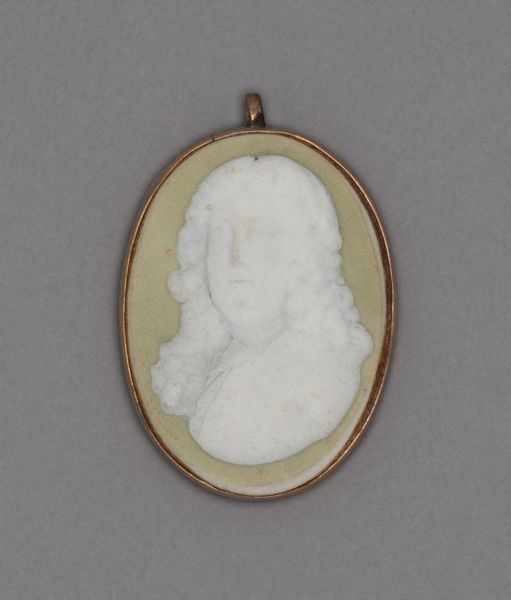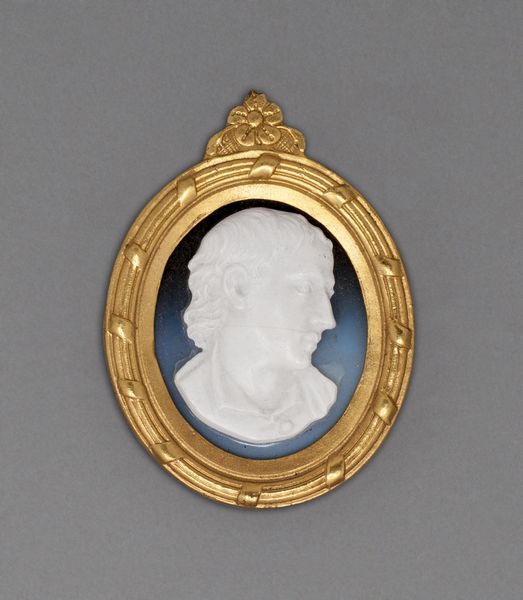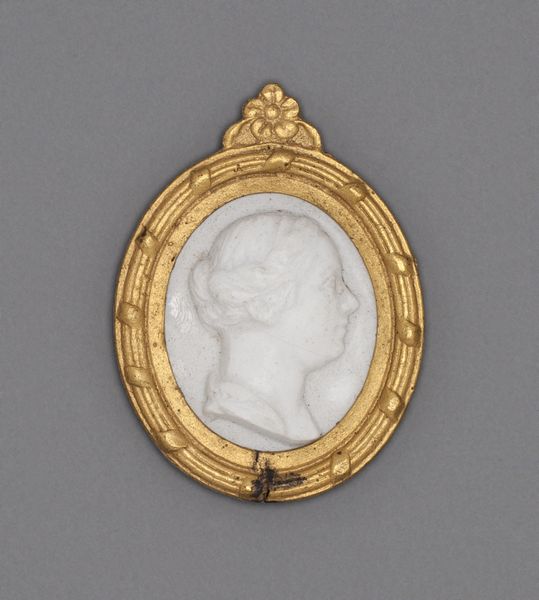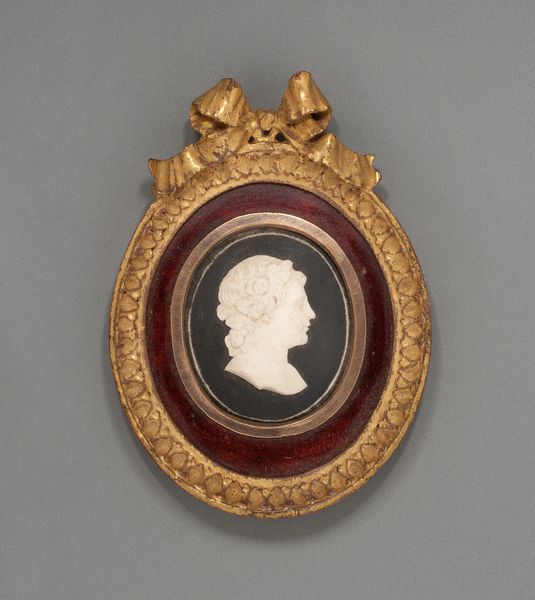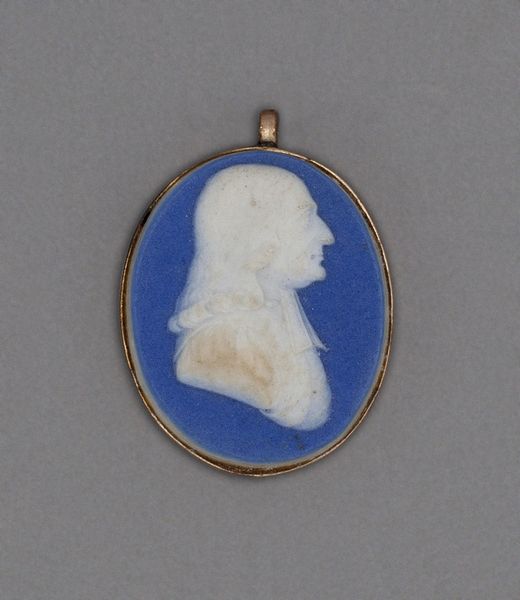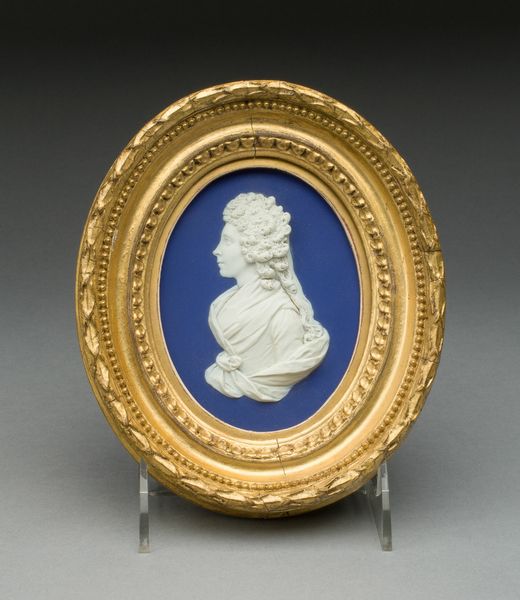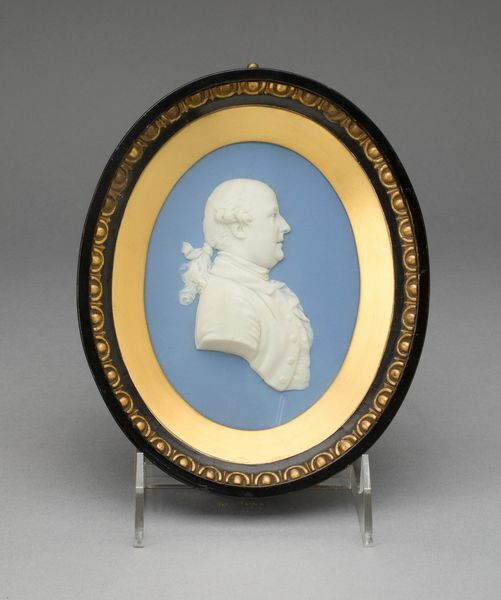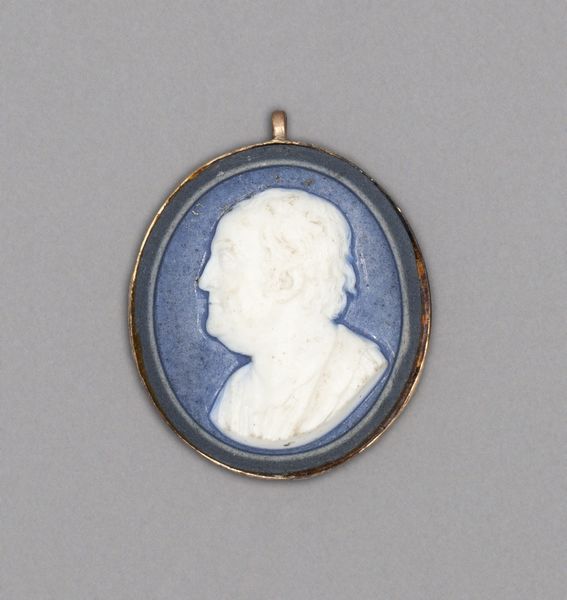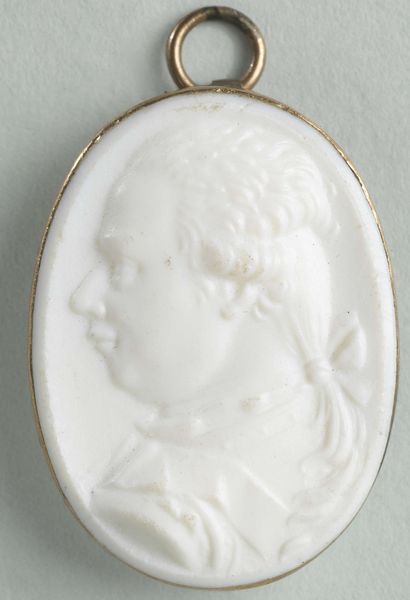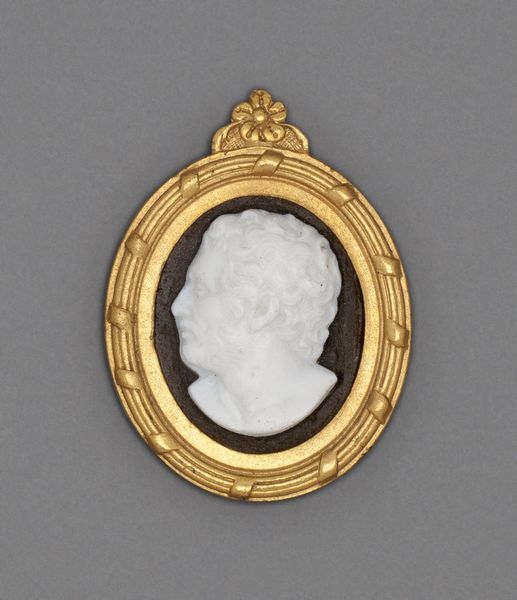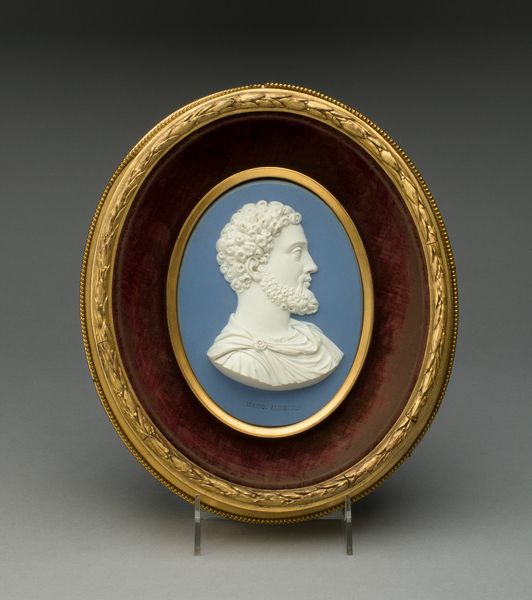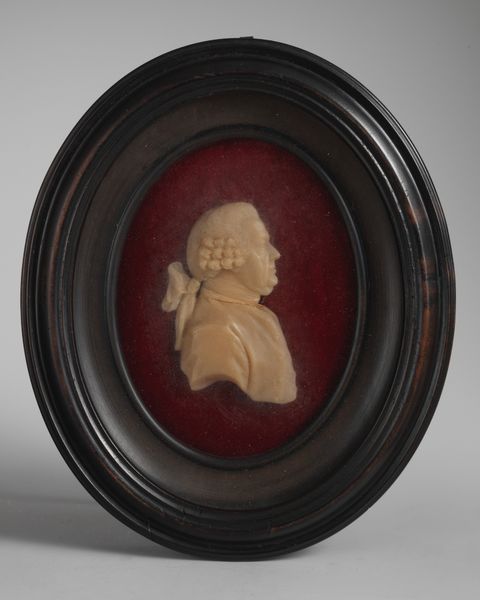
ceramic, sculpture
#
portrait
#
neoclacissism
#
ceramic
#
historical fashion
#
sculpture
#
decorative-art
Dimensions: 2.9 × 1.9 × 0.4 cm (1 1/8 × 3/4 × 1/8 in.)
Copyright: Public Domain
Curator: Looking at this Cameo Locket from the late 18th century, I am struck by its intimacy. The delicate ceramic and small size suggest a personal connection, perhaps a token of affection or remembrance. Editor: Yes, there's something incredibly tender about it. The milky white figure against that pale lilac background – it's like a whispered secret, an almost ghostly presence preserved in this little oval frame. I'm curious about the process – what does creating a cameo in ceramic involve? Curator: Well, it’s believed that this was created by the Wedgwood Manufactory, renowned for its Jasperware. The creation of Jasperware, and therefore this locket, required an incredibly precise process. This involved a unique mixture that, when fired, produced a matte, unglazed surface, perfect for intricate relief work. The layering of contrasting colors, particularly the white relief on a colored ground, was essential to their process. Editor: Thinking about that matte surface, you almost expect to feel the cool touch of the ceramic as you handle it. I imagine these pieces as precious and incredibly delicate. This locket, intended to be worn so close to the skin, tells you so much about consumption habits. Do you believe these kinds of personal items had other functions beyond sentimentality? Curator: Absolutely. The Neoclassical style, quite popular then, reflected the socio-political fascinations with antiquity. Pieces like this showcased the owner's cultural awareness. This wasn't just decorative; it was a declaration of belonging to an elite, cultured class. And Wedgwood cleverly leveraged these cultural trends. Editor: Indeed. Thinking of the industrial methods involved at the Wedgwood Manufactory highlights something too. You have the intimate, handmade feel, of the decorative object. Yet there's a whole mechanized industry behind the product. I think it highlights something about taste and value during this era, how the lines between the hand-crafted and factory-produced become increasingly blurred. Curator: I concur completely, a piece like this embodies larger artistic and societal currents during a transformative era. Editor: Looking closer at its construction brings fresh consideration. The process itself tells such a rich story about taste, class and the business of art.
Comments
No comments
Be the first to comment and join the conversation on the ultimate creative platform.
